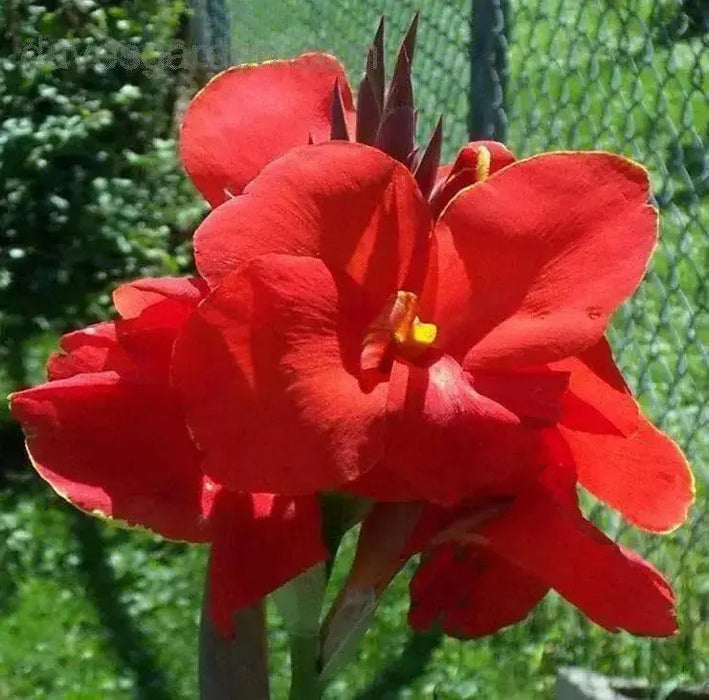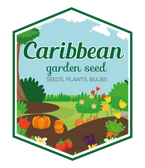
Dwarf Canna Lily Red Futurity (Root/rhizomes) TROPICAL foliage
FAST & FREE SHIPPING
Over 90% of our orders are processed and ship out by next business day.
We are currently processing and shipping most orders within 1-3 business days. (backorders not included) Due to high demand during the peak months of January to May, orders may require additional time for packaging /shipment.
Free shipping for orders over $54.95. Excludes live plants, fresh products And Stackable Black Plastic Nursery Crate
Shipping and handling charges will cover outbound freight and packaging materials. Fees are applicable to all orders, based on total order value pre-tax. Expedited services can be selected at Checkout with extra fees.
- Free shipping to lower 48 states on orders $54.95+
- (Most Items), excluding live plants, plant bulbs, and black plastic nursery crate.
- Safe Seed Pledge
- Satisfaction Guaranteed
- Select your desired size and/or color from the available options.
Due to increased packing volume, expect a delay in order shipment.
(2- 3 Eyes Rhizome)
Canna Red Futurity - extremely dark foliage with crimson red flowers; attractive to hummingbirds; self-cleaning; 3'; winter hardiness zone 7-10; tuber.
s are easy-to-grow large will thrive in moist, fertile soil. Make the backdrop of your summer garden come alive with this beauty! tropical to sub-tropical herbaceous plants. Most species originate from tropical America, but almost all cultivated varieties are hybrids. Where hardy, they are grown as perennials and in colder regions they are commonly grown as vigorous tender perennials.
Canna is amazingly adaptable. Plants prefer full sun and rich moist to wet soil but can be surprisingly drought tolerant if faced with a bout of dry weather. The thick fleshy rhizomes of cannas transplant and divide easily. In temperate zones, they may be dug and brought into a cool, dry garage or basement to over winter and then planted again in spring after the last frost date.
Use these in containers, waterside gardens or as focal points in any bed or border. Because cannas dwell in both wet soil and dry, they are perfect for water garden settings, though they will not tolerate deep standing water.
Planting
Dig beds at least a shovel's depth
Work a small amount of bulb food or all-purpose flower fertilizer into the bottom of the bed
Refrigerate tulip bulbs a few weeks before planting
Plant true bulbs 2-3 times as deep as they are in diameter - large bulbs deeper than small bulbs
Plant corms and tubers shallow, at the same level as the soil surface
Cover planting area with mulch 1 - 3 inches thick to prevent soil crusting in sun and rain
Watering
Fast-growing herbaceous plants require more attention to watering than woody plants
When possible, water in the morning to avoid promoting diseases from night watering
Water slowly and deeply when plants begin to wilt and do not perk up at night
Watering twice, a few minutes apart, helps water soak in deeper
Soaker hoses and trickle or "drip" irrigation are very efficient and water-conservative
Never overwater, or you may cause root problems
Mulches help reduce water evaporation in hot or dry weather
In dry climates, form a soil "ring" around plants to hold water longer
Pruning
Tall or leggy plants may be cut or pinched back to stimulate strong new growth
Cut or pinch stems of flowering or foliage plants just above leaves or old leaf joints
Thin excess growth so remaining growth will be more vigorous
"Deadhead" - remove faded flowers or seedheads to stimulate new flowering growth
Remove dead, faded, or diseased foliage as needed
Remove some foliage during transplanting to reduce stress on new roots
Clean up plants at the end of the season to reduce pest or disease buildup and to keep the area neat
Avoid putting diseased plant parts in the compost, or risk spreading diseases later
Propagation
True bulbs usually form small new bulbs at the base of the old ones, and can be dug and separated when they are dormant. Digging and dividing bulbs while in bloom or shortly afterward can cause them to skip a year or more before flowering again.
Dig and divide corms, rhizomes, and tubers when plants are not actively growing or flowering
Replant as soon as possible into well-drained garden soil, or store in cool, dry places until the appropriate season
Fertilization
specialty (labeled for your specific plant type) or a generic N-P-K (nitrogen - phosphorus - potassium)
Fertilize early in the plant's growing cycle - spring for summer plants, fall for winter plants
For leafy plants, use a fertilizer with a higher nitrogen content (first number)
For flowering or fruiting plants, use a fertilizer higher in phosphorous content (middle number)
If using a water soluble fertilizer:
Mix as directed on container according to directions
Wet the leaves and drench soil
Repeat
If using a granulated fertilizer:
Scatter a small amount of all-purpose fertilizer lightly under plants from the stem to beyond the outer spread of branches or foliage
Water slowly and deeply
NOTE: Never over fertilize!
HOW TO GROW GUIDE
LET OUR CUSTOMER SPEAK FOR US

![[Seeds] - Caribbeangardenseed](http://caribbeangardenseed.com/cdn/shop/files/gift-card-gift-card-1_1024x1024_dfa857db-9150-4315-a362-7f0bb3fb9c47_60x28.png?v=1722895789)






